Alaskan Malamutes are one of the most majestic and powerful breeds known for their strength, endurance, and independence. With their thick fur coats and wolf-like appearance, these dogs are often associated with the rugged terrain of Alaska, pulling sleds and working alongside humans in harsh conditions. Their hardy constitution and active lifestyle mean that their nutritional needs might differ from other breeds. But how much should you feed an Alaskan Malamute? Let’s delve into the specifics.
1. Understanding the Basics: Caloric Requirements
First and foremost, the amount of food an Alaskan Malamute requires is directly related to its energy needs. On average, an adult Alaskan Malamute not involved in heavy work may need around 20-30 calories per pound of body weight per day. However, for those involved in strenuous activities or during colder months when they burn more calories to maintain body temperature, this requirement can go up.
For example:
- A 75-pound adult Malamute with moderate activity might require 1500-2250 calories a day.
- If the same dog is highly active, it might need up to 2700 calories or more daily.
2. Puppies vs. Adults
Puppies: Growing Malamutes require more calories and nutrients than adults. Puppies might need 50 calories per pound of body weight. As they grow, this requirement decreases.
Adults: As mentioned earlier, adults require around 20-30 calories per pound, depending on activity levels.
3. Quality Over Quantity
Not all dog foods are created equal. The quality and calorie content can vary greatly. Always read the label to determine the calories per cup or can, and then adjust the feeding amount accordingly.
4. Cost Estimation
The monthly cost of feeding an Alaskan Malamute can vary based on the brand, quality of food, and regional price differences. Assuming a high-quality kibble costs around $2-$3 per pound:
For a moderately active 75-pound adult Malamute consuming about 1500-2250 calories/day:
- You might feed about 4-6 cups daily (assuming around 400-500 calories per cup).
- That’s about 120-180 cups monthly.
- If a 30-pound bag of food contains roughly 120 cups, you’d need 1 to 1.5 bags per month.
- Monthly cost: $60-$90.
Remember, treats, supplements, or any additional foods will add to this cost.
5. Adjustments for Individual Needs
Malamutes, like people, are individuals. Some might have a faster metabolism, while others can be more sedentary. It’s essential to monitor your dog’s weight and adjust the feeding amounts accordingly. Overfeeding can lead to obesity, a growing concern in many dog breeds.
6. Treats and Extras
Who can resist those pleading eyes? While it’s tempting to give in, remember that treats and table scraps add extra calories. Always account for these when calculating the daily caloric intake.
7. Health Concerns to Consider
Malamutes are generally healthy, but they can be prone to specific issues like hip dysplasia and hypothyroidism. Dogs with these or other health concerns might have different dietary needs, so always consult with your vet.
8. The Importance of Hydration
Fresh water is as vital as quality food. Ensure your Malamute has access to clean water at all times, especially if they are on a dry kibble diet.
Our 5 Top Foods for Alaskan Malamutes
The diets were selected by our founder Justin Palmer, a certified canine nutrition expert, specifically with Alaskan Malamutes in mind:
| Food | Pros | Cons |
|---|---|---|
|
|
|
|
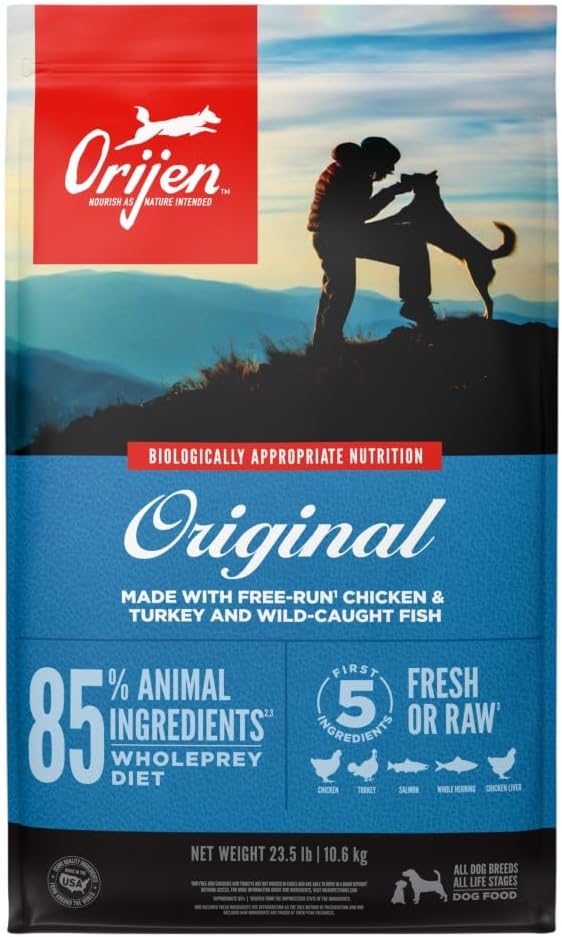
Check Today's Price on: |
|
|
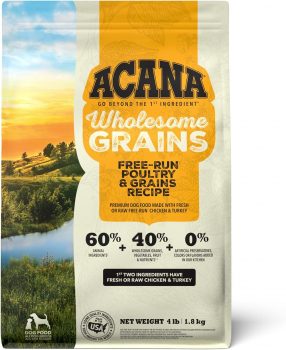
Check Today's Price on: |
|
|
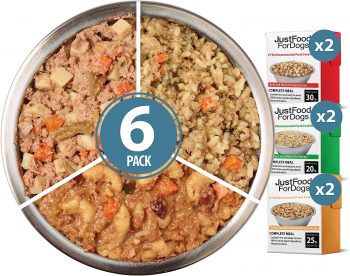
Check Today's Price on: |
|
|
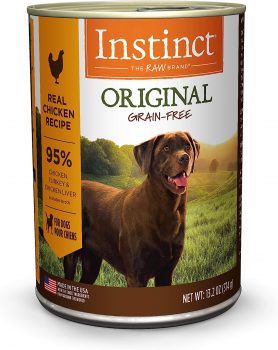
Check Today's Price on: |
|
|
Conclusion
Feeding your Alaskan Malamute isn’t a set-it-and-forget-it task. Regularly weigh your dog, monitor for signs of health or discomfort, and adjust feeding amounts as necessary. And always consult with a vet or pet nutritionist when in doubt. Your Malamute depends on you for its nutrition, so make every meal count!
Frequently Asked Questions About Feeding an Alaskan Malamute
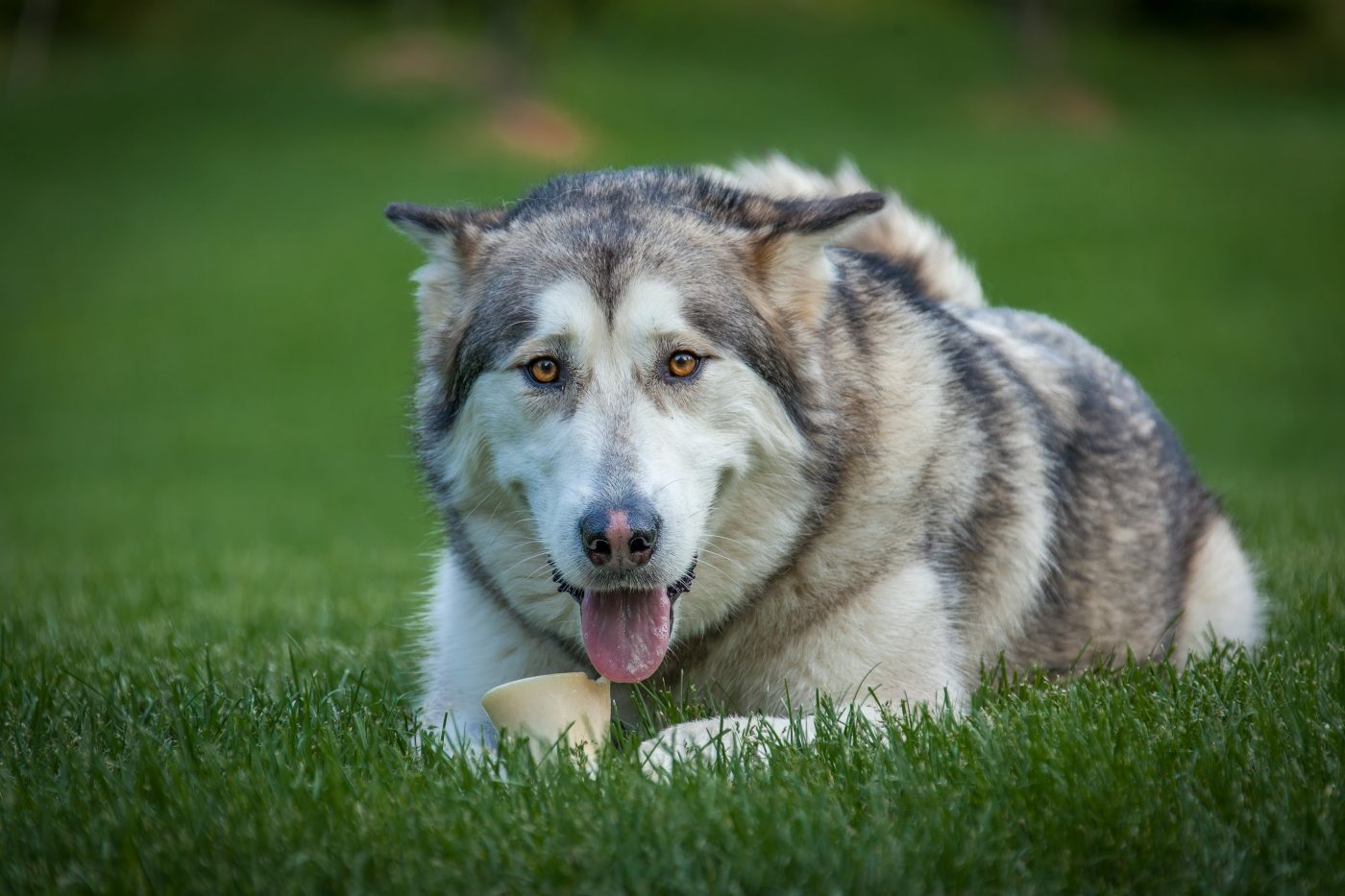
1. How many times a day should I feed my Alaskan Malamute?
For adult Alaskan Malamutes, it’s recommended to feed them twice a day — once in the morning and once in the evening. Puppies should be fed more frequently, usually 3 to 4 times a day, to support their rapid growth and higher energy levels.
2. Are there specific ingredients I should look for in dog food for Malamutes?
Yes, Alaskan Malamutes benefit from high-quality animal protein sources like chicken, beef, or fish. Additionally, look for foods rich in omega-3 and omega-6 fatty acids for a healthy coat, as well as joint-supporting ingredients like glucosamine.
3. Can Malamutes eat raw or BARF (Bones and Raw Food) diets?
Many Malamute owners opt for raw or BARF diets, believing it’s closer to their ancestral diet. If considering this option, it’s crucial to research and consult with a veterinarian or pet nutritionist to ensure the dog receives all necessary nutrients.
4. How do I know if my Malamute is overweight?
Regularly check your Malamute’s body condition. You should be able to feel the ribs without pressing hard but not see them. If you notice your dog gaining excessive weight or seeming lethargic, consult your vet and review their diet.
5. Do Malamutes have food allergies?
Like other breeds, some Malamutes can develop food allergies. Common allergens include grains, certain proteins, and dairy. If you notice symptoms like itching, ear infections, or digestive issues, consult your vet.
6. Can I give my Malamute human food?
While some human foods are safe for dogs, many can be toxic or harmful. It’s essential to know which foods are safe and to ensure that treats or human food don’t exceed 10% of their daily caloric intake.
7. How much water should an Alaskan Malamute drink daily?
Malamutes, especially active ones, require plenty of water. Generally, dogs should drink between 0.5 to 1 ounce of water per pound of body weight daily. Always ensure fresh water is available.
8. Do activity levels affect how much I should feed my Malamute?
Absolutely. Active Malamutes, especially those involved in sledding or agility, will burn more calories and require more food. Adjust the feeding amount based on your dog’s activity level.
9. Are grain-free diets good for Alaskan Malamutes?
While some Malamutes might benefit from grain-free diets due to allergies, it’s not necessary for all. It’s essential to choose a high-quality food that meets your dog’s nutritional needs, whether it contains grains or not.
10. How can I transition my Malamute to a new food?
When switching foods, do so gradually over a week. Start by mixing a small amount of the new food with the old, gradually increasing the new food’s proportion each day. This helps prevent digestive upset and eases the transition.
 Check Today's Price on:
Check Today's Price on: Toledo, United States.
Toledo, United States.